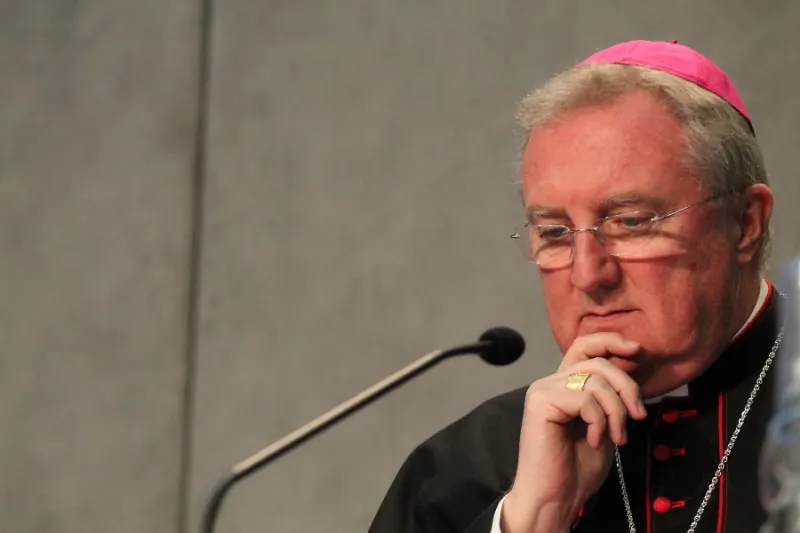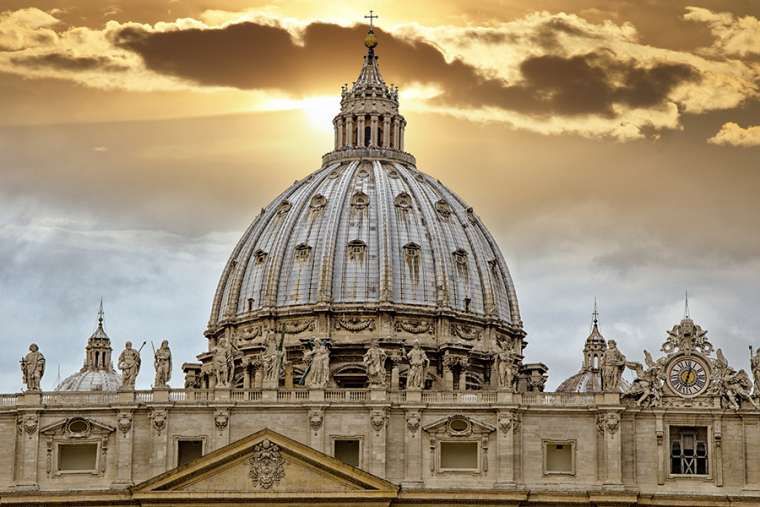
Vatican City, Nov 16, 2021 / 08:00 am (CNA).
The Vatican’s liturgy chief said this week that Pope Francis issued Traditionis custodes as the effort to reconcile the Society of St. Pius X (SSPX) “has not entirely been successful” and it is necessary to “go back” to what Vatican II required of the Church.
In an interview with a television channel serving Italian-speaking Switzerland, aired Nov. 14, Archbishop Arthur Roche said that “the normal form of the celebration of the Roman Rite is found in those documents that have been published since the Second Vatican Council.”
Pope John Paul II’s Ecclesia Dei and Benedict XVI’s Summorum Pontificum “were established in order to encourage the Lefebvrists, above all, to return to unity with the Church,” Roche continued, referring to the SSPX by the name of its founder, Archbishop Marcel Lefebvre.
“It’s clear that Traditionis custodes is saying: OK, this experiment has not entirely been successful. And so, let us go back to what the [Second Vatican] Council required of the Church,” the prefect of the Congregation for Divine Worship and the Discipline of the Sacraments said.
Issued with immediate effect on July 16, Pope Francis’ motu proprio Traditionis custodes (“Guardians of the tradition”) underlined that it is each bishop’s “exclusive competence” to authorize the use of the Traditional Latin Mass in his diocese.
In a letter to the world’s bishops explaining his decision, the pope said he felt compelled to act because the use of the 1962 Missal was “often characterized by a rejection not only of the liturgical reform, but of the Vatican Council II itself, claiming, with unfounded and unsustainable assertions, that it betrayed the Tradition and the ‘true Church.’”
Traditionis custodes made significant changes to Summorum Pontificum, a 2007 apostolic letter acknowledging the right of all priests to say Mass using the Roman Missal of 1962.
The Mass said using the 1962 Missal is known variously as the extraordinary form of the Roman Rite, the Tridentine Mass, and the Traditional Latin Mass.
Pope John Paul II wrote the apostolic letter Ecclesia Dei in 1988, after Lefebvre ordained four bishops without the permission of the Holy See. Lefebvre, who based the SSPX in Écône, Switzerland, was excommunicated along with the four bishops.
Benedict lifted the excommunication of the four illegitimately consecrated bishops in 2009, years after Lefebvre’s death, as part of his attempt to bring the Society back into full unity with the Catholic Church. The SSPX continues to have a canonically irregular status.
In his comments to the Swiss television program, Roche said that liturgical reform was desired by the majority of bishops attending Vatican II, which took place in Rome in 1962-65.
“And we’ve got to remember that [the liturgical reform] wasn’t the will of the pope. This was the will of the vast majority of the bishops of the Catholic Church, who were gathered together in the 21st ecumenical council, guiding the pope with regard to the future,” the archbishop said.
The 71-year-old English archbishop added: “What was produced in 1570 was entirely appropriate for the time. What is produced in this age is also entirely appropriate for the time.”
The year 1570 was when Pope Pius V issued the apostolic constitution Quo primum, making use of the revised Roman Missal obligatory throughout the Western Church, with certain exceptions. Pius V took the step following the Council of Trent, from which the term “Tridentine” is derived.
If you value the news and views Catholic World Report provides, please consider donating to support our efforts. Your contribution will help us continue to make CWR available to all readers worldwide for free, without a subscription. Thank you for your generosity!
Click here for more information on donating to CWR. Click here to sign up for our newsletter.






Roche: “…this experiment [the celebration of the TLM] has not entirely been successful.” How does Roche explain the TLM’s ‘success’ for many hundreds of years.
Obviously, NO (not any type or form of) Mass measures up to the expectations of this Vatican. So why not ease the movement of all who want to leave–as the German Synod suggested–‘to do away with the priesthood’?
If this Vatican could reason, they’d know that their experimental Novus Ordus did nothing but contradict VCII’s document on the sacred liturgy. All around, they have failed Christ first, His Church and His faithful, next. They should take their millstones and go.
As addressed recently Vatican policy as Guardians of tradition is the cataloguing of liturgical tradition in the Vatican Library. Liturgical vestments likely the Vatican museum. Ironically Pope Francis mused early in his pontificate that the Gospels are not museum pieces collecting dust, draped over with moth eaten blankets. An allusion to updating what Christ revealed.
Soon after Francis published his exhortation Amoris Laetitia 2016 which gave a new spin on the gospels that had heads spinning [for some of us alarm]. Again, ironically, a new gospel [authored in principle by Cardinal Tucho Fernandez with Francis allegedly left to ‘spin’ the details]. Somehow the living body of Christ’s Gospel revelation, Apostolic Tradition, began to appear in the Vatican Museum. Guardians of tradition Pope Francis, Cardinals Parolin, Ladaria, Archbishop Roche presently aim at collecting more antiquated museum exhibits canon 915 deftly extracted during the most recent Bishops synod first intended to address Eucharist cohesion [now a reduced catechetical instruction] the canon prepared for exhibition as a curiosity.
All this is shaping the Church into a pasteurized, homogenized splendid uniformity. Simplistic and entirely innocuous.
He is gaslighting